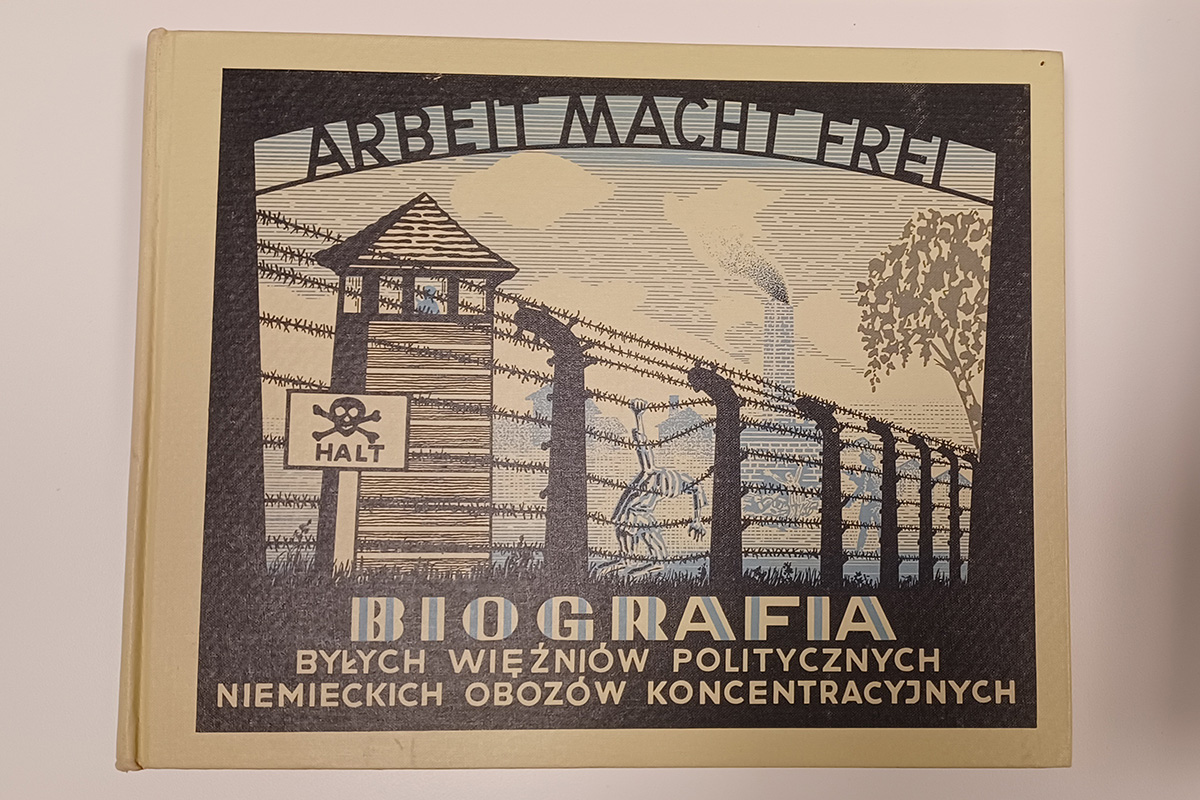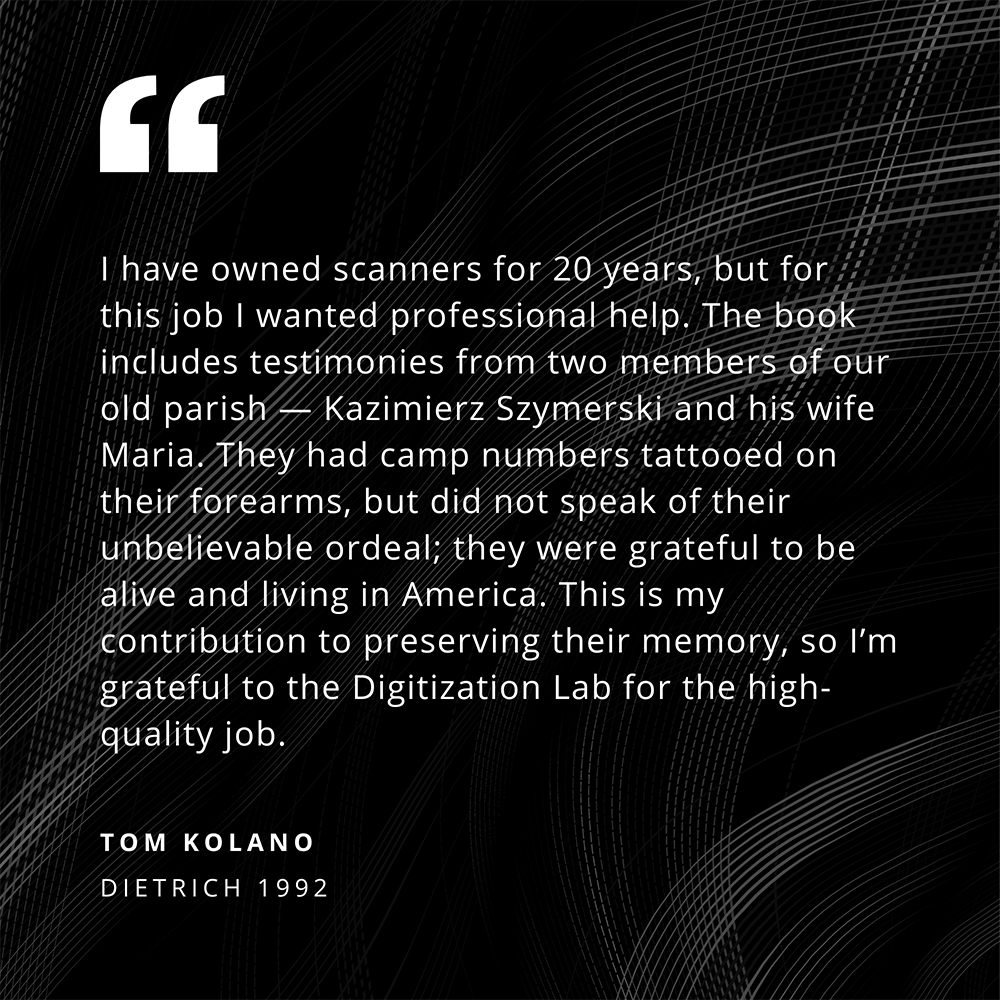
The University Libraries’ Digitization Lab supports the Libraries’ overarching mission to preserve collections and make them accessible. To date the University Libraries has scanned close to two million pages of resources, providing 24/7 access to thousands of researchers. While the lab most often works with materials held by the University Archives and Special Collections, it has also played a role in digitizing key documents for local communities — for example, Pittsburgh’s Jewish newspapers. Most recently, the lab has completed a project focused on Polish history.
 The project began when CMU alumnus Tom Kolano, a 1992 graduate of the Dietrich College of Humanities and Social Sciences, was approached by the National Institute of Remembrance, a government-funded organization in Poland. The group was interested in the book “Biografia: Byłych Więźniów Politycznych; Niemieckich Obozów Koncentracyjnych,” a compilation of the testimonies of Polish Holocaust survivors who relocated to other countries after World War II.
The project began when CMU alumnus Tom Kolano, a 1992 graduate of the Dietrich College of Humanities and Social Sciences, was approached by the National Institute of Remembrance, a government-funded organization in Poland. The group was interested in the book “Biografia: Byłych Więźniów Politycznych; Niemieckich Obozów Koncentracyjnych,” a compilation of the testimonies of Polish Holocaust survivors who relocated to other countries after World War II.
The book had been passed down in his family for 50 years, and Kolano didn’t want to lose access to his copy by sending it away — or destroy it by taking it apart to scan individual pages with his own sheet feed scanner. Instead, he reached out to the Libraries, and was connected with Digitization Projects Manager Ann Marie Mesco and her team for assistance.
Goal
- To digitize Kolano’s personal copy of “Biografia: Byłych Więźniów Politycznych; Niemieckich Obozów Koncentracyjnych,” which is approximately 350 pages, printed in the United States (in Polish) in 1975.
How We Helped
- After receiving the book, the team inspected it for potential damage to the spine due to its age. The Libraries’ non-invasive scanning equipment was able to scan the bound book to preservation-quality TIFFs without damaging the pages.
- Following the scanning process, the team performed post-processing and then optical character recognition in the appropriate language. From there, they could create derivative formats such as JPEGs.
- Mesco and her team completed the entire project over a period of about three weeks. However, the digitization process itself only took a few hours, due to Digitization Technician Joseph Mesco’s expertise in handling fine and rare books.
Results
- Kolano was able to share the digitized PDF with the National Institute of Remembrance, while ultimately keeping his family’s physical copy in his possession. The book is likely still under copyright, so the Libraries is unable to publish it online in the digital collections at this time.
